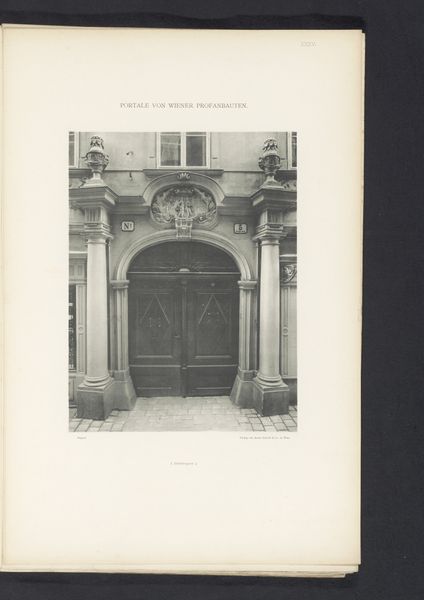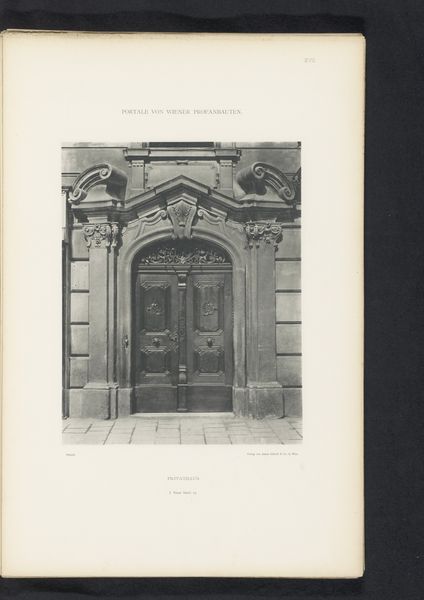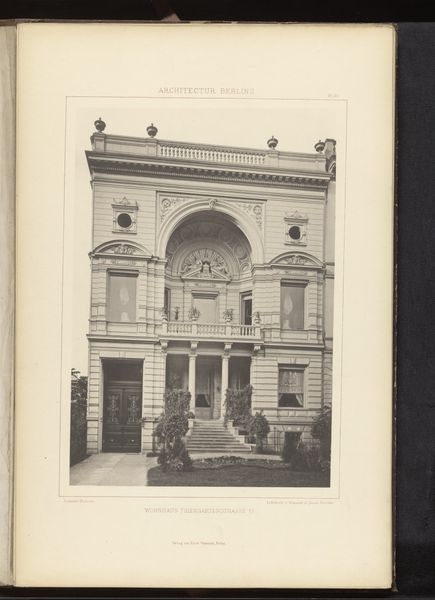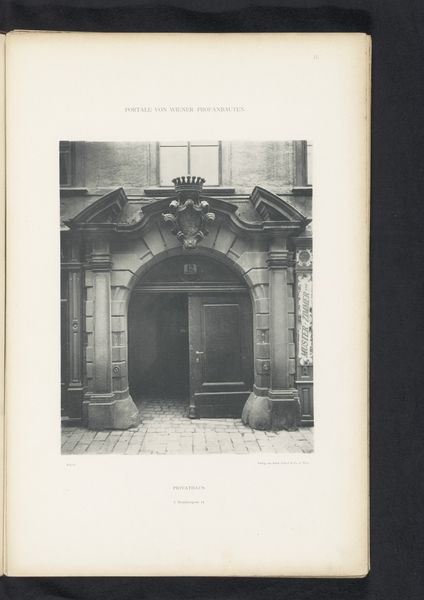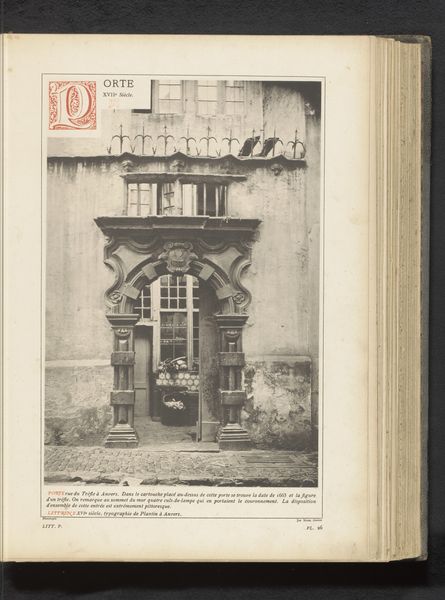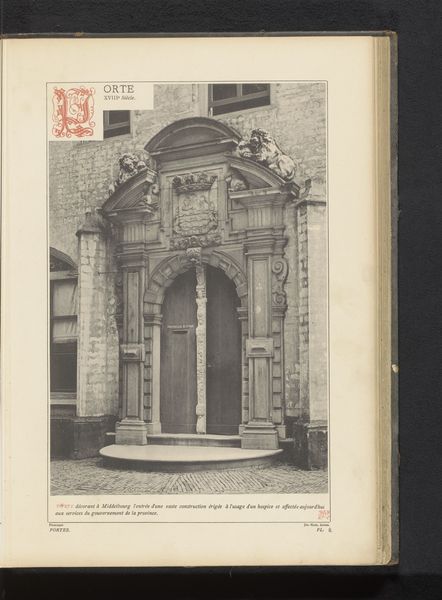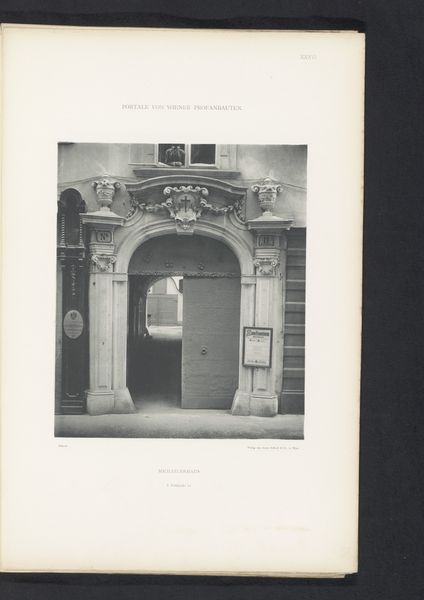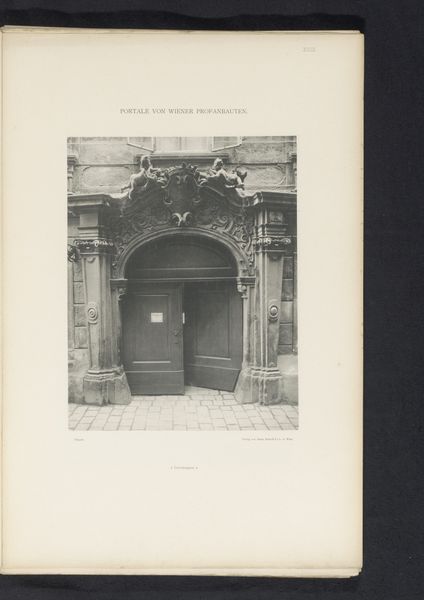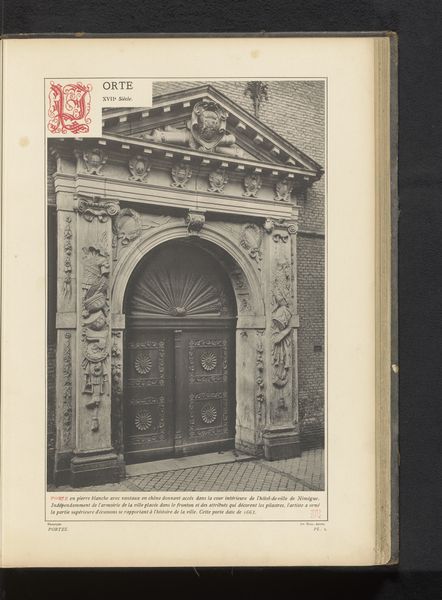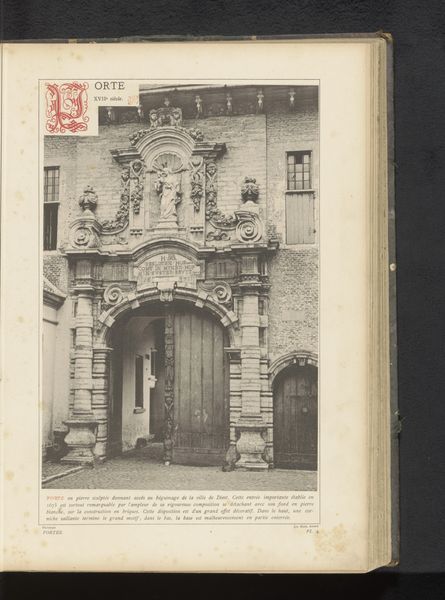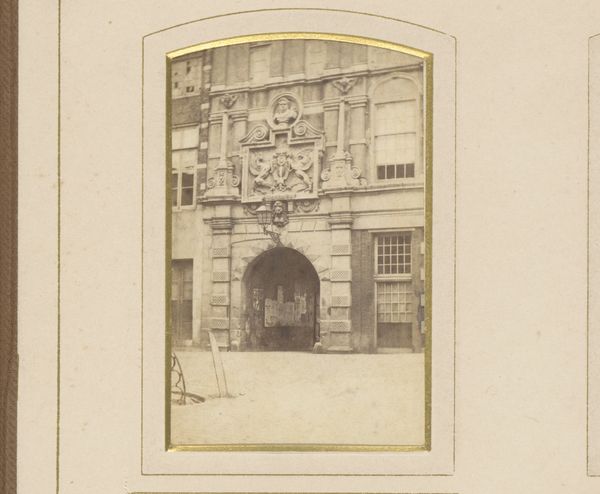
print, photography, architecture
# print
#
photography
#
cityscape
#
architecture
#
realism
Dimensions: height 334 mm, width 228 mm
Copyright: Rijks Museum: Open Domain
Editor: This print, a photograph really, captures the "Muntpoort te Dordrecht" - the Mint Gate in Dordrecht - sometime before 1881. The stark architectural detail is quite striking, almost theatrical. What stands out to you in this piece? Curator: What immediately catches my eye is the symbolic weight imbued in this structure. The Muntpoort, as the entrance to the Mint, is not merely a gate, but a potent symbol of economic power and civic identity. Consider the inscription above the arch – can you decipher the meaning embedded there? Editor: I see fragments. It looks like there's something about kings and prosperity for Holland. Curator: Precisely. This isn’t just about money. This is a statement about sovereignty, the "Keysers" or Emperors implying control and dominion over the financial wellbeing of the region. It projects authority and prosperity. The very architecture broadcasts this message of stability, wealth, and enduring power to all who pass through. Think of the psychological impact such imagery had. Editor: So, this wasn't just functional; it was a form of propaganda? Curator: Indeed! It used symbolism to reinforce the cultural memory and ongoing narrative of Holland's economic strength. The architecture itself acts as a continuous, visible assertion of the city’s and the nation's financial stability and legitimacy. Editor: That's fascinating. I hadn't considered how architecture could function almost as a constant advertisement for power. I will look at architecture with a different eye from now on. Curator: And consider how each repeated viewing reinforces and subtly reshapes our understanding of that power! It’s a potent image to carry through time.
Comments
No comments
Be the first to comment and join the conversation on the ultimate creative platform.
